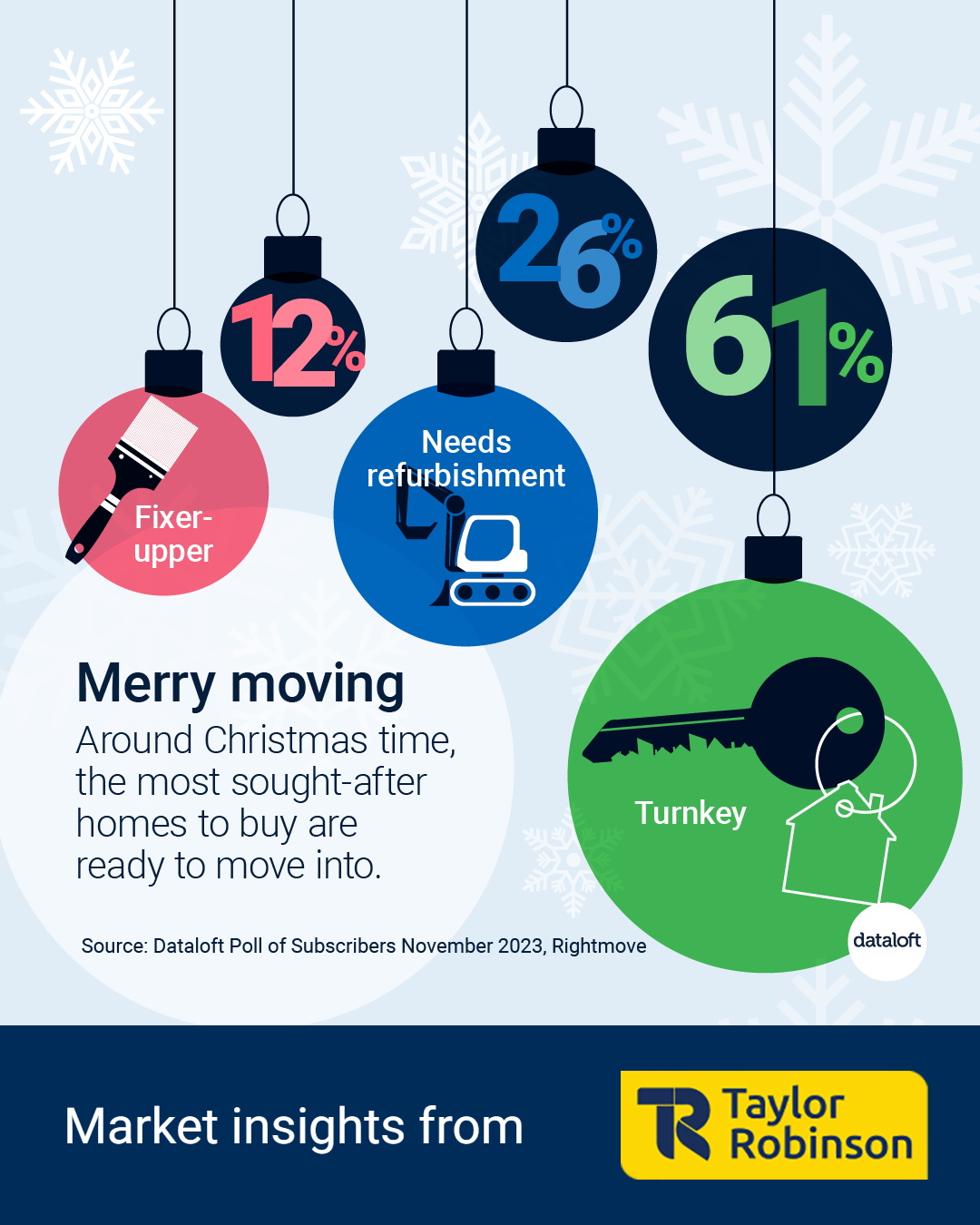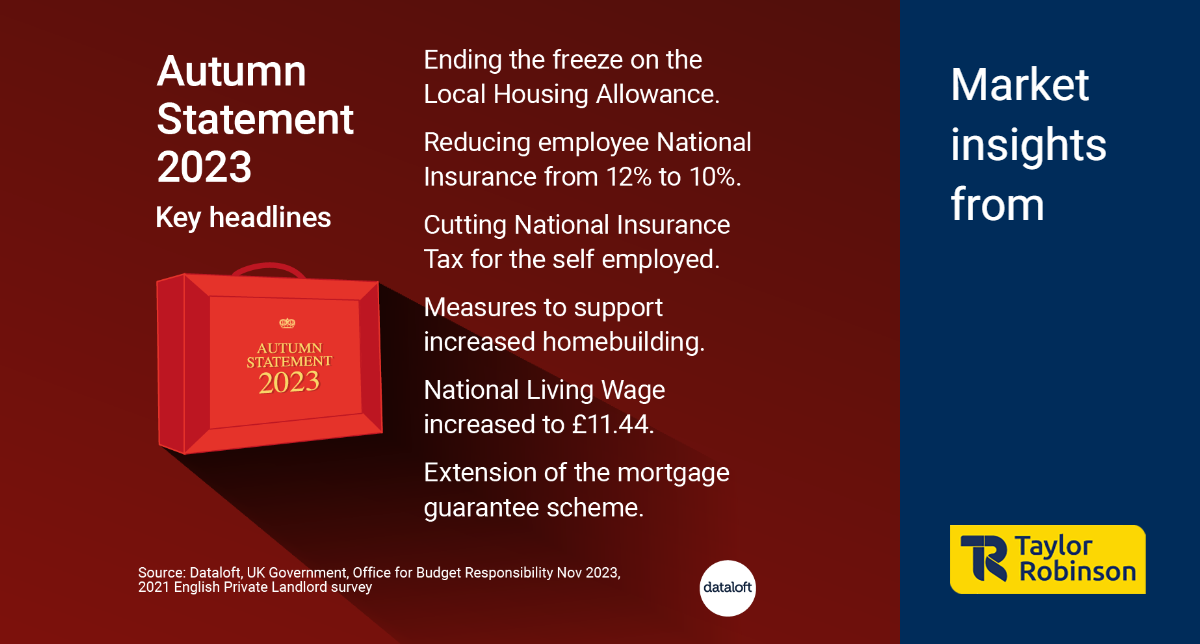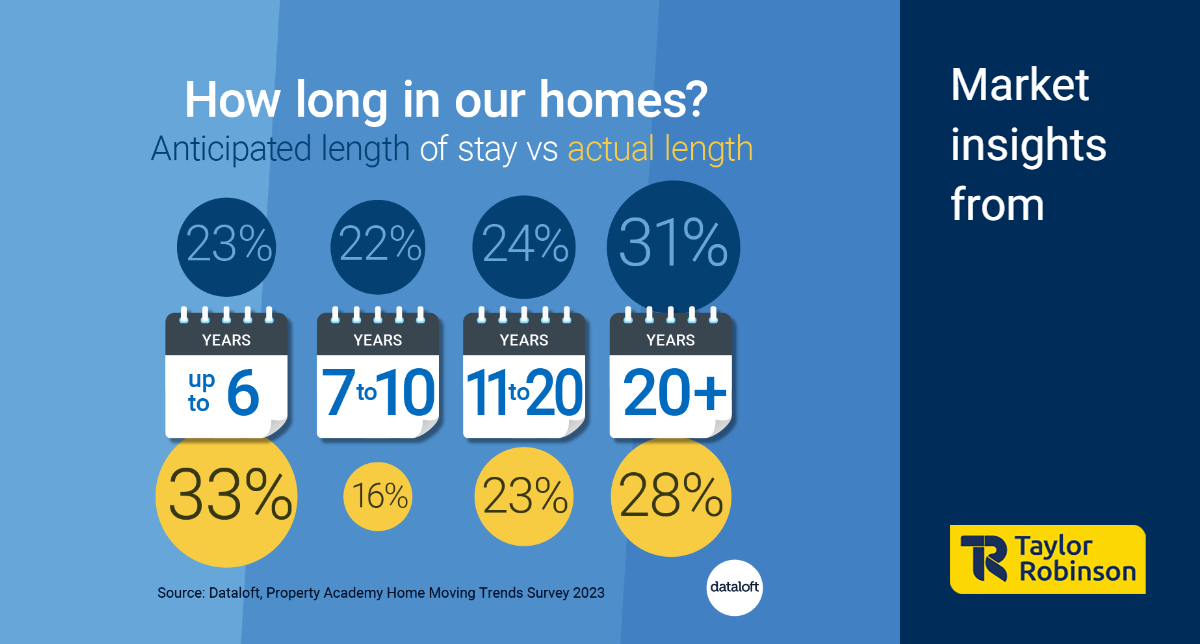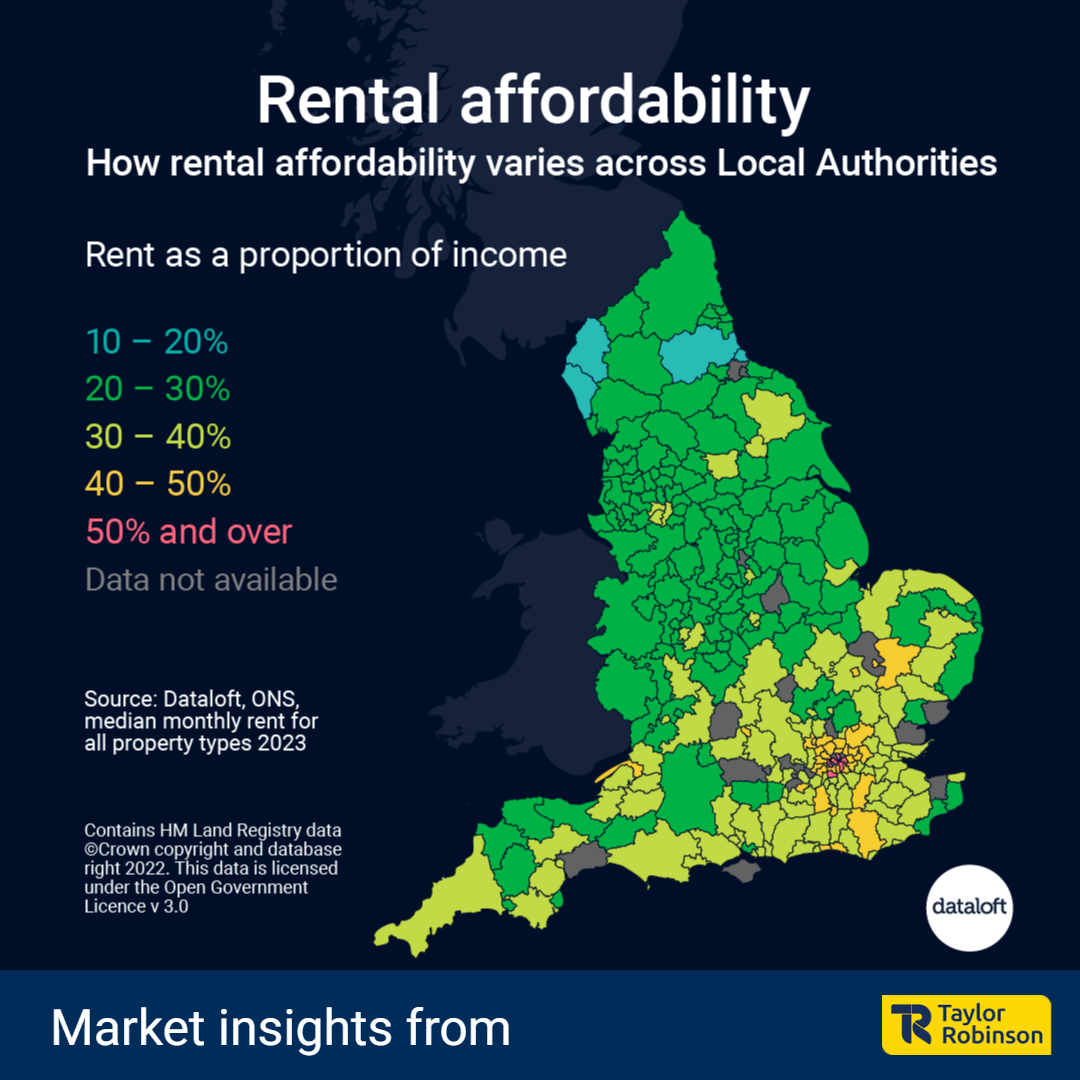Blog

As the festive season approaches, a recent survey conducted by #Dataloft Poll of Subscribers in November 2023, in collaboration with Rightmove, unveils interesting insights into the preferences of prospective homebuyers during the Christmas season. The findings suggest that a significant 61% of respondents are saying "Ho-Ho-No!" to refurbishments or fixer-uppers, expressing a strong desire to move into their new homes hassle-free as they countdown to Christmas.
Fixer-Uppers: A Merry 8% Cheaper:
Surprisingly, over a quarter of survey participants revealed that homes in need of refurbishment are the most sought after. These properties come with an attractive bonus – they are, on average, 8% cheaper than the typical properties available for sale in the market. This budget-friendly option has sparked interest among a considerable portion of the homebuying population, providing an opportunity to save money while investing in a property that holds potential.
Newly-Refurbished Homes: A Frosty Premium of 19%:
On the flip side, the survey also shed light on a different trend among homebuyers. Approximately 39% of respondents expressed a preference for newly-refurbished homes. However, this choice comes at a frosty premium, with buyers willing to pay an average of 19% more for the convenience of moving into a property that requires little to no additional work. This premium translates to nearly £70,000, showcasing the value placed on a turnkey solution.
The Christmas Rush and Housing Market Dynamics:
The survey results reflect the unique dynamics of the housing market during the holiday season. The Christmas rush seems to influence buyer preferences, with a substantial portion opting for the ease and convenience of a ready-to-move-in property. The desire to avoid the stress of refurbishments and settle into a new home in time for the festive season appears to be a driving factor.
Implications for Sellers and Market Trends:
For sellers, understanding these preferences can be crucial in positioning their properties effectively in the market. Highlighting the benefits of a hassle-free move-in or the potential for customization in fixer-uppers could be key marketing strategies.
Moreover, these findings indicate a diverse landscape in the housing market, where different segments of buyers have distinct preferences. Property professionals and developers may need to adapt their strategies to cater to these varied demands, ensuring a well-balanced inventory that appeals to a wide range of potential buyers.
As we navigate the Christmas season, the housing market experiences a fascinating interplay between the desire for a hassle-free move-in and the attraction of more affordable fixer-upper options. The data from the #Dataloft Poll of Subscribers, in collaboration with Rightmove, provides valuable insights into the complex decision-making processes of homebuyers during this festive time, shedding light on the nuanced dynamics of the property market.
- Details
- Hits: 327

As we celebrate the one-year milestone of navigating the intricacies of the property landscape, it is imperative to delve into the latest developments shaping the rental market. Our expertise in deciphering market trends has brought forth a nuanced understanding of the demand-supply imbalance, rental fluctuations, and the ever-evolving dynamics that define the sector.
Demand-Supply Imbalance:
In the realm of rental properties, the persistent demand-supply imbalance remains a focal point of discussion. According to recent data from a Dataloft Poll of Subscribers (October 2023), a staggering 17% of agents reported instances where renters consistently offered amounts exceeding the asking rent. Additionally, 44% acknowledged that such instances occurred intermittently, painting a picture of an intense competition among tenants vying for desirable properties.
Market Metrics:
As we scrutinize the broader metrics, the average UK rent stands at £1,279, reflecting an annual increase of 8.9%. However, a closer examination reveals a subtle monthly decline of 0.3%. This dip hints at a seasonal cooling in demand post a bustling summer period, indicating a cyclical trend in rental activity.
Regional Variances:
The intricate tapestry of the UK rental market is further complicated by regional variances. While rents experienced a marginal decrease across the board, noteworthy increases were observed in the East of England, Midlands, South West, and Wales. These regional outliers challenge conventional expectations, emphasizing the localized nature of rental market dynamics.
Winter Lull, Yet Persistent Competition:
Traditionally, demand in the rental market tends to wane during the winter months. However, the current landscape defies this norm, with competition remaining robust despite the seasonal dip. This resilience in tenant demand underscores the critical need for property owners and agents to stay attuned to shifting market dynamics and adjust strategies accordingly.
In conclusion, our comprehensive analysis of the UK rental market, drawing insights from reputable sources such as the Dataloft Poll of Subscribers (October 2023) and HomeLet (November 2023), unveils a complex tapestry of demand-supply imbalances, regional nuances, and seasonal variations. As experts in the field, we remain committed to unravelling these intricacies, offering invaluable insights to stakeholders navigating the ever-evolving landscape of the rental market.
- Details
- Hits: 313

In the recent Autumn Statement, the Chancellor unveiled a series of measures aimed at addressing various facets of the UK economy, with a particular focus on the property market. From bolstering support for low-income renters to implementing changes in National Insurance rates and making significant investments in housing initiatives, the government has outlined a comprehensive strategy with potential implications for both tenants and property owners.
Support for Low-Income Renters
A key highlight of the Autumn Statement is the government's commitment to supporting low-income renters by raising the Local Housing Allowance to cover the lower 30% of rents. This move is anticipated to provide financial relief to 1.6 million households, with an average support of £800. This injection of funds is expected to alleviate the burden on vulnerable tenants, offering them increased financial stability in the face of rising living costs.
National Insurance Cuts and Their Impact on Landlords
The reduction in employee National Insurance rates from 12% to 10% is a significant development that will have a tangible impact on the average earner, translating to an annual saving of £450. Simultaneously, self-employed individuals, including landlords with five or more properties, are set to benefit from similar reductions in National Insurance contributions. This move is poised to positively influence the financial landscape for a substantial portion of the property-owning demographic, potentially stimulating further investment in the housing market.
Government Commitment to Housing Development
Recognizing the need for increased housing supply, the government has committed to relaxing planning rules and injecting £110 million into schemes aimed at supporting the construction of 40,000 new homes. This strategic investment signals a concerted effort to address the ongoing housing shortage, with the potential to invigorate the property market by creating more opportunities for buyers and renters alike.
OBR Predictions for House Price Growth and Mortgage Rates
The Office for Budget Responsibility (OBR) has revised its predictions for UK house price growth and mortgage rates. According to their projections, house prices are expected to experience a 4.7% decline in 2024, following a modest 0.9% increase in the current year. These adjustments reflect the complex interplay of various economic factors and underscore the importance of carefully monitoring the evolving landscape of the property market.
The Autumn Statement of 2023 introduces a range of measures designed to impact the property market from multiple angles. From providing support to low-income renters and implementing National Insurance cuts to fostering housing development and revising house price growth predictions, the government's approach reflects a nuanced understanding of the challenges and opportunities within the property sector. As stakeholders navigate these changes, a dynamic and adaptable approach will be essential to capitalize on the evolving landscape of the UK property market.
- Details
- Hits: 308

In the dynamic landscape of property, the expectations and realities of home moving often diverge, as highlighted by the recently-released Property Academy Home Moving Trends Survey. The findings provide a compelling glimpse into the patterns and perceptions surrounding people's residential transitions, shedding light on the motivations, timelines, and unforeseen twists that shape the journey of finding and settling into a new home.
Unmet Expectations: A Closer Look
One striking revelation from the survey is that people move more frequently than they initially anticipate. While a mere 23% of home movers expect to relocate within the next six years, the survey unveils a different reality—indicating that one-third of individuals are likely to make a move within this timeframe. This trend becomes even more pronounced among first-time buyers, with 43% anticipating a residence for six years or less, contrasting with the 37% who end up staying that duration.
Forever Homes and Longevity
The allure of a 'forever home' remains a potent concept, with 31% of respondents expressing the belief that their new property will be a lifelong abode. However, the survey paints a different picture, revealing that only 28% of participants actually find themselves staying in their homes for over two decades. This disjunction between anticipation and reality suggests a fluidity in housing decisions, influenced by diverse factors that unfold over time.
Motivations for Moving: Downsizing Takes the Lead
Understanding the motivations behind selling a property is crucial in comprehending the ebb and flow of the property market. According to the survey, the primary reason cited for selling a property is downsizing, with 18% of respondents making this choice. Following closely is upsizing, at 16%, and a change of scenery or lifestyle, at 15%. These motivations reflect the dynamic nature of life circumstances that prompt individuals to reassess their housing needs.
Source and Implications
The insights presented are sourced from the #Dataloft, Property Academy Home Moving Trends Survey 2023, providing a comprehensive understanding of the shifting dynamics in the property market arena. As individuals navigate the complex terrain of housing decisions, these findings serve as a valuable resource for industry professionals, policymakers, and homeowners alike.
The Property Academy Home Moving Trends Survey offers a revealing glimpse into the intricate dance between expectations and realities in the realm of home moving. From the frequency of relocations to the motivations driving property sales, the survey captures the nuanced decisions that shape individuals' residential trajectories. As the property market landscape continues to evolve, these insights provide a roadmap for anticipating and addressing the diverse needs and preferences of those embarking on the journey of finding a new home.
- Details
- Hits: 333

In the intricate landscape of the UK rental market, the southern regions, particularly in the vibrant and bustling South of England, present a unique set of challenges for prospective tenants. Despite the allure of higher earnings, the cost of renting a home in this region requires individuals to allocate a substantial portion of their income to cover living expenses. Understanding the concept of 'rental affordability' serves as a key metric in gauging the pressure within local rental markets, offering valuable insights into the economic dynamics of various areas.
Rental Affordability as an Indicator
Rental affordability is a crucial metric that sheds light on the delicate balance between income and housing costs in any given locality. It is calculated by examining the average rent as a proportion of the average earnings in a specific area, typically measured in Local Authorities. This metric provides a comprehensive view of the financial strain that renting imposes on individuals and families, making it an invaluable tool for assessing the health of a rental market.
The London Conundrum
Nowhere is the impact of rental affordability more pronounced than in the bustling metropolis of London. The city, synonymous with opportunity and prosperity, presents a stark reality for its residents. An average Londoner, earning what is considered an average salary for the capital, must allocate more than 40% of their earnings to cover the average rent. This startling figure underscores the immense pressure on individuals in the capital to balance housing costs with other essential expenses.
Contrastingly, in many other parts of the country, the equivalent proportion hovers between 20% and 30%. This stark contrast highlights the regional disparities in rental affordability and underscores the unique challenges faced by those navigating the rental market in the South of England.
Balancing Act: Earnings versus Expenses
One might assume that higher earnings in the South of England provide a cushion against the soaring costs of rent. Fortunately, for many individuals, the correlation between rising rents and increasing salaries helps to mitigate the financial strain. While rent has seen an upward trajectory, salaries have also experienced growth, providing a degree of relief for tenants in the face of escalating living costs.
Hidden Gems in the Home Counties
Surprisingly, within the home counties, there are pockets where the balance between income and rental costs remains favourable. Areas such as East and North Hertfordshire, Dover, and Folkestone stand out as examples where only 20–30% of incomes are allocated to rent. These locales present an intriguing alternative for those seeking affordable housing options without compromising on their overall financial well-being.
Source: #Dataloft Rental Market Analytics, Information Works, Land Registry
Navigating the rental market in the South of England demands a nuanced understanding of the intricate interplay between earnings and housing costs. As an expert in the field, it is crucial to emphasize the significance of rental affordability as a key indicator of the economic health of local rental markets. By staying informed and exploring hidden gems within the home counties, individuals can make informed decisions that align with their financial goals while securing a place to call home in this dynamic and challenging landscape.
- Details
- Hits: 287









